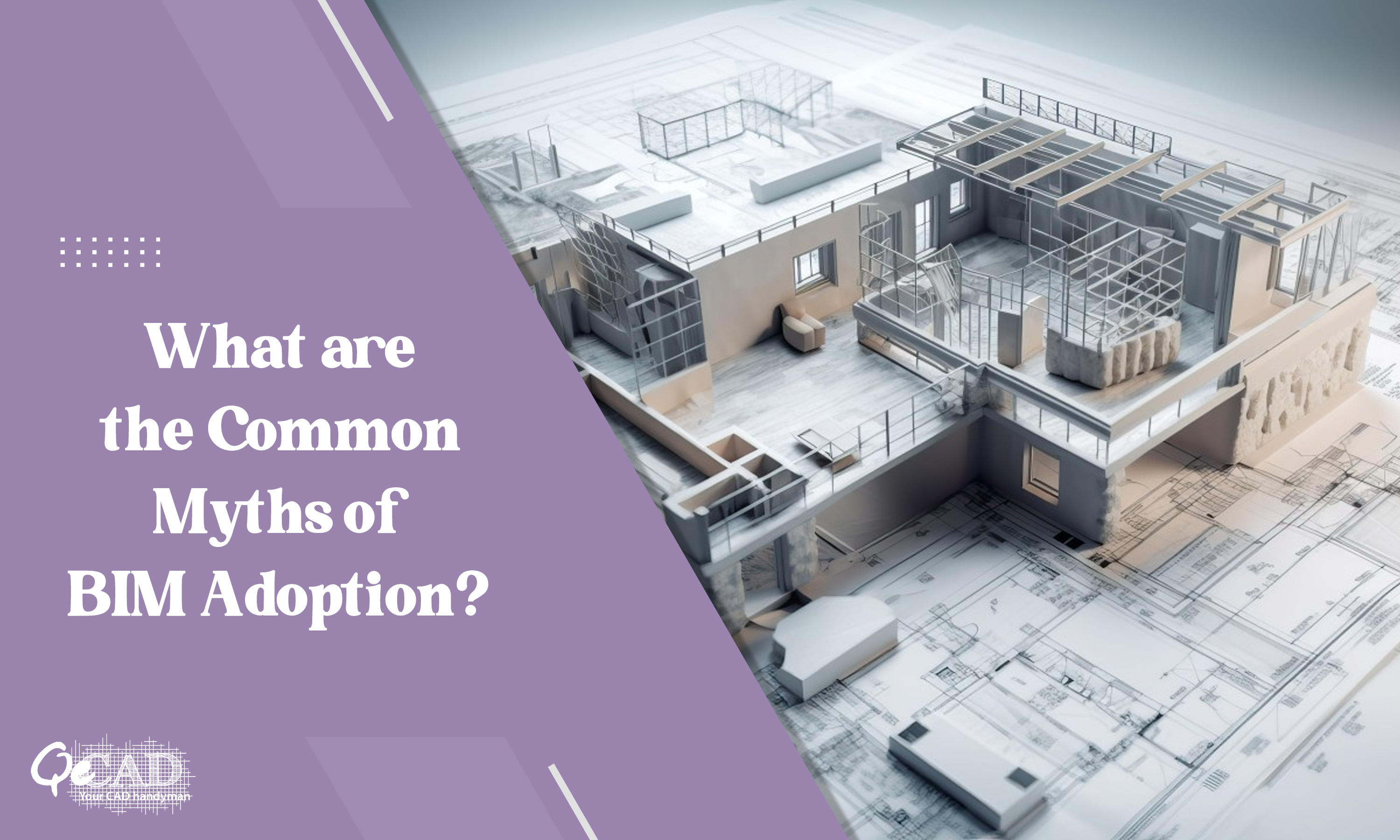
When we talk about the AEC Industry, BIM has popped up as a life-changing technology for the AEC professionals. However, despite its proven benefits, there are several persistent myths surrounding BIM adoption by the AEC professionals. Let us explore some of the most typical misconceptions to shed light on the true potential of BIM Services.
Myth 1: BIM is Restricted to Only Large Scaled Projects
One prevailing myth is that BIM is suitable only for the larger sized projects. While BIM does offer significant advantages for complex structures and mega-projects, its scalability makes it equally beneficial for smaller projects too. In fact, BIM can streamline workflows, improve coordination, and enhance project efficiency regardless of the project size. Small to medium-sized firms can leverage BIM to gain a competitive edge, reduce errors, and deliver higher quality projects within budget and stipulated time.
Myth 2: BIM is Too Expensive to Implement
Cost concerns often restrict firms from adopting BIM. However, the initial investment in BIM software and training is outweighed by the long-term savings in terms of time and resources. BIM facilitates better project coordination, reduces rework, minimizes clashes, and promotes fluent collaboration among the team involved. These efficiencies translate into cost savings throughout the project lifecycle. Moreover, as BIM adoption becomes more widespread, the cost of software and training has decreased, making it more accessible to smaller firms and projects.
Myth 3: BIM Replaces Human Expertise
There are some professionals in the industry who fears that BIM will replace traditional design and engineering roles with automation. In reality, BIM amplifies the human expertise by offering robust tools for visualization, simulation, as well as analysis. Designers, engineers, and architects can leverage BIM to explore multiple design options, simulate real-world conditions, and optimize building performance. BIM augments rather than replaces human creativity and decision-making, empowering professionals to deliver innovative solutions and serve the client needs appropriately.
Myth 4: BIM is Only Limited to Design and Construction
Another misconception is that BIM’s utility ends once construction is complete. On the contrary, BIM’s value extends even to the operational and maintenance phases of a building’s lifecycle. Facility managers can utilize BIM data for efficient space management, preventive maintenance scheduling, and asset tracking. BIM’s ability to provide accurate as-built information facilitates smoother handover processes and enables owners to maximize the building’s operational efficiency over its lifespan.
Myth 5: BIM is Difficult to Learn and Implement
While BIM adoption requires a learning curve, modern BIM software is designed to be intuitive and user-friendly. Training programs and certifications are widely available to help AEC professionals upskill and familiarize themselves with BIM workflows. Many firms gradually implement BIM by starting with pilot projects and gradually expanding its use across their organization. With the right support and commitment, firms of all sizes can successfully integrate BIM into their workflows and reap its numerous benefits.
Myth 6: BIM is Only for Architects and Engineers
BIM is often perceived as a tool exclusively for architects and engineers. In reality, BIM promotes interdisciplinary collaboration by facilitating seamless information sharing among architects, engineers, contractors, subcontractors, and other project stakeholders. Contractors can use BIM for detailed scheduling, cost estimation, and logistics planning, while subcontractors can leverage BIM for accurate material take-offs and fabrication drawings.
Myth 7: BIM is a Passing Trend
Some skeptics view BIM as a passing trend rather than a fundamental shift in the AEC industry. However, BIM has already become a standard practice in many countries and is mandated for public infrastructure projects in several jurisdictions. Its ability to improve project outcomes, reduce waste, and enhance sustainability aligns with global trends toward digital transformation and data-driven decision-making. As technology evolves, BIM will likely evolve as well, remaining a cornerstone of modern construction practices.
Conclusion
While myths surrounding BIM adoption persist, the reality is that BIM represents a substantial leap forward in the AEC industry. By dispelling these misconceptions and embracing BIM’s potential, firms can enhance project efficiency, reduce costs, and deliver higher quality buildings. Whether for small-scale projects or large-scale developments, Architectural BIM Services offers transformative benefits that position firms for success in a competitive market.
